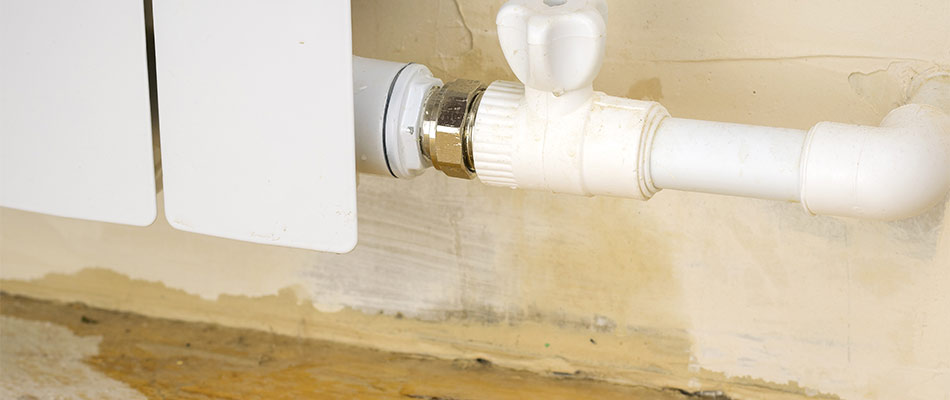They are making several good annotation about Hacks to detect leaks overall in this great article further down.

Early discovery of leaking water lines can minimize a prospective disaster. Some little water leakages might not be noticeable.
1. Check Out the Water Meter
Every house has a water meter. Examining it is a surefire manner in which aids you discover leaks. For starters, turn off all the water resources. Ensure nobody will certainly flush, make use of the faucet, shower, run the cleaning device or dishwasher. From there, most likely to the meter and also watch if it will certainly change. Considering that no one is utilizing it, there should be no activities. If it relocates, that indicates a fast-moving leak. If you detect no modifications, wait an hour or 2 and also check back once again. This suggests you may have a sluggish leakage that could even be underground.
2. Check Water Usage
If you detect sudden changes, despite your consumption being the very same, it suggests that you have leakages in your plumbing system. An abrupt spike in your expense suggests a fast-moving leak.
On the other hand, a stable increase every month, even with the exact same routines, shows you have a sluggish leak that's likewise slowly intensifying. Call a plumber to completely inspect your building, specifically if you really feel a cozy location on your flooring with piping below.
3. Do a Food Coloring Examination
30% comes from toilets when it comes to water intake. Examination to see if they are running appropriately. Decrease specks of food shade in the tank and also wait 10 mins. If the color in some way infiltrates your dish during that time without flushing, there's a leakage between the tank and also bowl.
4. Asses Outside Lines
Do not fail to remember to check your exterior water lines too. Needs to water leak out of the link, you have a loosened rubber gasket. One tiny leakage can waste heaps of water and surge your water expense.
5. Inspect as well as Assess the Situation
Homeowners should make it a routine to check under the sink counters and also inside cabinets for any type of bad odor or mold and mildew growth. These 2 red flags suggest a leak so prompt interest is called for. Doing regular inspections, even bi-annually, can conserve you from a significant problem.
If you know your home is already old, maintain a careful eye on your heating systems, hoses, pipelines etc. Check for discolorations and also weakening as a lot of appliances as well as pipelines have a life span. They will certainly likewise normally degrade as a result of tear and wear. If you think leaking water lines in your plumbing system, do not wait for Contact it to escalate. Call a professional plumber right now so you do not wind up with a terrible mess in your home.
Early detection of dripping water lines can minimize a potential disaster. Some tiny water leaks may not be visible. Inspecting it is a guaranteed way that helps you find leakages. One little leakage can throw away bunches of water and also increase your water costs.
If you presume leaking water lines in your plumbing system, don't wait for it to escalate.
WARNING SIGNS OF WATER LEAKAGE BEHIND THE WALL
PERSISTENT MUSTY ODORS
As water slowly drips from a leaky pipe inside the wall, flooring and sheetrock stay damp and develop an odor similar to wet cardboard. It generates a musty smell that can help you find hidden leaks.
MOLD IN UNUSUAL AREAS
Mold usually grows in wet areas like kitchens, baths and laundry rooms. If you spot the stuff on walls or baseboards in other rooms of the house, it’s a good indicator of undetected water leaks.
STAINS THAT GROW
When mold thrives around a leaky pipe, it sometimes takes hold on the inside surface of the affected wall. A growing stain on otherwise clean sheetrock is often your sign of a hidden plumbing problem.
PEELING OR BUBBLING WALLPAPER / PAINT
This clue is easy to miss in rooms that don’t get much use. When you see wallpaper separating along seams or paint bubbling or flaking off the wall, blame sheetrock that stays wet because of an undetected leak.
BUCKLED CEILINGS AND STAINED FLOORS
If ceilings or floors in bathrooms, kitchens or laundry areas develop structural problems, don’t rule out constant damp inside the walls. Wet sheetrock can affect adjacent framing, flooring and ceilings.
https://www.servicemasterbyzaba.com/blog/how-to-detect-water-leakage-in-walls/

We were brought to that article about Detecting hidden plumbing leaks from an acquaintance on our other web address. Do you know anybody else who is involved in the subject? Take a moment to promote it. Many thanks for your time. Please check up our website back soon.